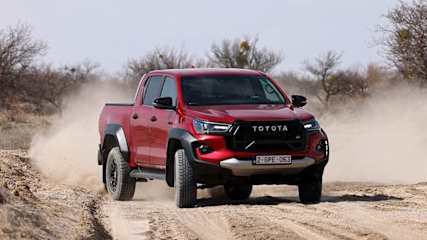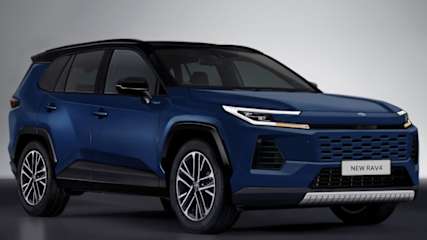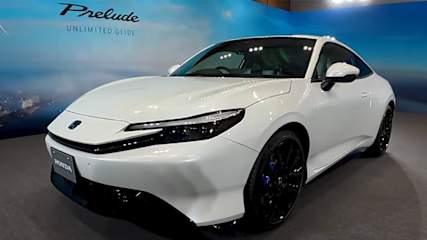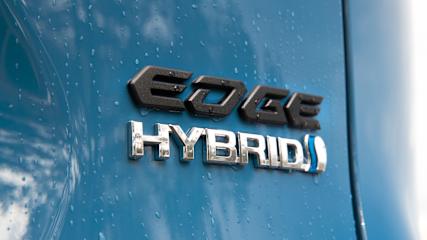Australia's EV future at risk? Car industry reacts to Dutton's rumoured plan to scrap fines for vehicle emissions breaches and why it might benefit Toyota, Mitsubishi, Ford and more
By Samuel Irvine · 04 Apr 2025
The Electric Vehicle Council (EVC) of Australia has condemned a rumoured plan by the Coalition to scrap fines for carmakers that exceed emissions targets under the New Vehicle Efficiency Standards (NVES) scheme, should Opposition Leader Peter Dutton win the federal election in May.According to a report by The Australian, Coalition sources said they have secured the support of the automotive sector in a move that is aimed at undermining Labor’s claims that the cost of petrol and diesel cars would not increase under NVES. The full policy is expected to be detailed closer to election day.EVC CEO Julie Delvecchio said the potential policy shift would give manufacturers a free pass to continue selling more pollutive cars, while failing to bring the cost of electric cars and hybrids down for consumers.“Removing penalties in the efficiency standard will mean one thing: Australians will be locked out of the savings that come from switching to an EV - up to $3000 a year that could be in their pocket - simply because the most fuel-efficient vehicles will never reach our shores,” said Delvecchio.The EVC has maintained that the NVES has delivered lower costs for consumers since it was implemented on January 1, with the number of EVs and plug-in hybrid (PHEV) models on sale in Australia now exceeding 120 models, including Australia’s first EV priced under $30,000 – the BYD Dolphin.“No penalties means fewer fuel-efficient vehicles and higher running costs," Delvecchio added.“While it's still early days, the NVES is already proving essential in expanding consumer choice, lowering fuel bills and driving competitive pricing for EVs and fuel-efficient cars.”The NVES was devised with the aim of encouraging car brands to progressively sell more fuel-efficient vehicles in Australia or face a $100 fine for every gram of carbon they exceed over the limit for each vehicle sold. Australia is often cited as one of the last developed nations globally – alongside Russia – to adopt a vehicle emissions standard.Emissions targets are set at 143g/km for passenger vehicles and a more lenient 210g/km for light commercial vehicles, which includes Australia’s popular ute segment. Fines aren’t enacted until 2028, with the emissions threshold lowering each year.Despite demand for EVs falling 19.9 per cent in March compared to the same time last year, PHEV sales increased by a staggering 380 per cent off the back of the Fringe Benefits Tax exemption concluding on April 1.Demand for petrol-hybrids, meanwhile, has climbed by 34.8 per cent compared to March last year, while petrol and diesel sales have fallen by 9.8 per over the same period.The Federal Chamber of Automotive Industries (FCAI), which represents several of Australia’s top-selling car brands such as Toyota, Mitsubishi and Ford, has been critical of the NVES from its inception.CEO Tony Weber said that falling consumer demand for EVs this year reflected the government’s failure to account for consumer demands when devising the scheme.“We are at a critical point in transitioning to a lower-emission vehicle fleet. But the reality is clear: Australian families and businesses are not shifting in large numbers to EVs,” Weber said.“The Australian automotive industry has long advocated for an ambitious and achievable emissions standard. Once again, questions must be asked about the Government’s modelling and in particular their assumptions about consumer acceptance of new low-emissions technologies.”In a statement on the NVES, Sean Hanley, Vice President of Sales, Marketing and Franchise Operations for Toyota, Australia’s top-selling car brand, said it supported the NVES but that the targets would be difficult for manufacturers to meet.“The targets within the NVES are very challenging, particularly for commercial vehicles,” said Hanley.“We have no intention of discontinuing vehicles popular with the Australian public. We also recognise we have a duty to customers who need 'tool of trade' vehicles.”Despite its passenger line-up only consisting of hybrid powertrains, the majority of which sit under the first phase of the NVES’ emission targets, Toyota sells several best-selling SUV and ute models that breach the targets, such as the HiLux, LandCruiser and Prado.Its 22-model rich line-up also only includes one EV, compared to several other Chinese brands that have arrived in Australia more recently and only carry EVs or PHEVs, such as BYD.Mitsubishi Australia, whose President and CEO Shaun Wescott serves as Deputy Chair of the FCAI, echoed support for the NVES but said that consumers would benefit from its reform.The brand sells one of the country’s most popular PHEVs – the Outlander PHEV – but is yet to offer an EV in Australia.“There are notable challenges in aligning the policy’s ambition with market realities and practical constraints. Automotive manufacturers face several hurdles, including market gaps in certain vehicle segments, constraints of designing and bringing new cars to the Australian market, and a slowing consumer uptake of EVs due to concerns about limited charging infrastructure,” said Mitsubishi's Government Relations Manager, Yarik Turianskyi.Ford Australia, which generated 89 per cent of its sales last year from the diesel-powered Ranger ute and Everest SUV, said it would work with whichever government won the election on the NVES, but voiced similar concerns to Toyota and Mitsubishi.“We recognise the importance of an emissions scheme for the country, and we continue to engage with industry and the government to make sure our voice is heard when it comes to creating a supportive ecosystem, and other measures,” said a Ford spokesperson.“We know that NVES will be a challenging transition for the industry and for us. We will do the same with whomever forms the government after the upcoming election.”The Albanese government has said it plans on reviewing the NVES periodically from 2026.For Julie Delvecchio, ensuring penalties remain for car brands who breach the targets is integral to Australians realising long-term cost-of-living relief, while ensuring the transport sector meets its government-mandated targets of net zero by 2050.“Without a strong fuel efficiency standard, Australia risks once again becoming the world's dumping ground for fuel-guzzling, polluting vehicles. Some manufacturers may prefer a toothless policy, but Australians would pay the price for such short-sighted changes.”




.jpg)


.jpg)

